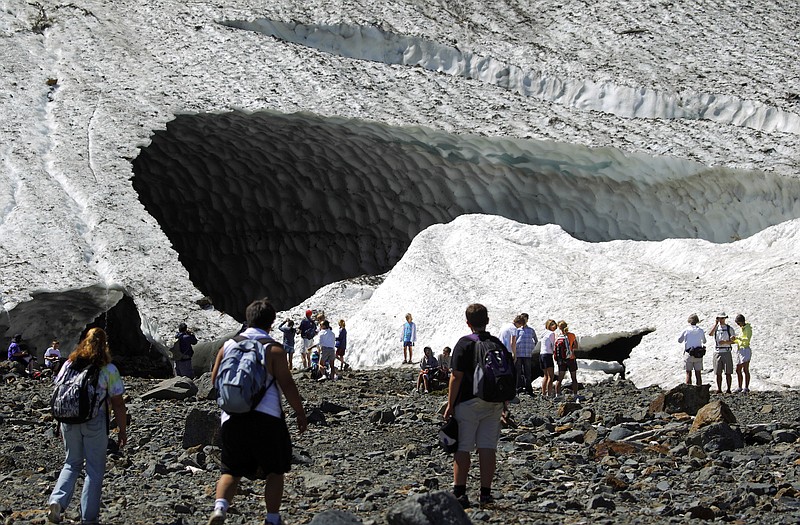VERLOT, Washington (AP) - Thousands of visitors each year make the easy one-mile trek to glimpse spectacular snow and ice formations at the Big Four Ice Caves in Washington state.
But the attraction that has made the forested hike one of the most popular in the region has also made it dangerous.
On Tuesday, crews were trying to recover the body of a 34-year-old woman buried when rock and ice fell at the back of the cave. Five people were injured in the collapse and are expected to survive.
Extremely dangerous conditions were making the recovery difficult. Rescuers said more debris fell overnight, and the body is in the back of the cave, buried by rock and ice.
The ice caves area is prone to avalanches, falling rocks and ice, and visitors are urged not to leave the trail or enter the caves.
However many people still wander in and around them, enticed by the cavernous openings formed from avalanches that cascade down the 6,135-foot Big Four Mountain during the winter and spring.
Signs warn visitors of the hazards from ice and rock at the Big Four Ice Caves, a popular hiking destination about 70 miles northeast of Seattle. Warm weather has made the caves unstable this season, and access to the ice caves has been closed until further notice.
There have been deaths at the caves before. In July 2010, an 11-year-old girl was killed outside the caves by a bouncing chunk of ice.
A different section tumbled down on Sunday, but none of those hikers inside were injured.
"It was a very terrifying moment," said Sara Soleimani, an avid ice climber who filmed Sunday's partial cave collapse and said she heard ice cracking just a few seconds before a chunk of the cave sheared off.
"I was shaking for about 10 minutes after," said Soleimani, 29, of Long Beach, California.
Hikers, including many families with children, take a well-maintained trail to reach the ice caves, which are the lowest elevation permanent snow and ice patch in the United States outside of Alaska. People go to the area surrounding the caves for the spectacular mountain scenery and to escape the summer heat.
Scott Pattee, a water supply specialist with the Natural Resources Conservation Service, said this year's snowpack has been almost non-existent, and with so little snow, there have been fewer avalanches to feed the ice caves.
"It doesn't surprise me that something like that happens. Ice melts when it's warm," he said.
Among those injured Monday, a 25-year-old man in intensive care was in serious condition, Harborview Medical Center spokeswoman Susan Gregg said, while a 35-year-old man was in satisfactory condition and a 35-year-old woman was treated and released. Two minors also were treated and released.

